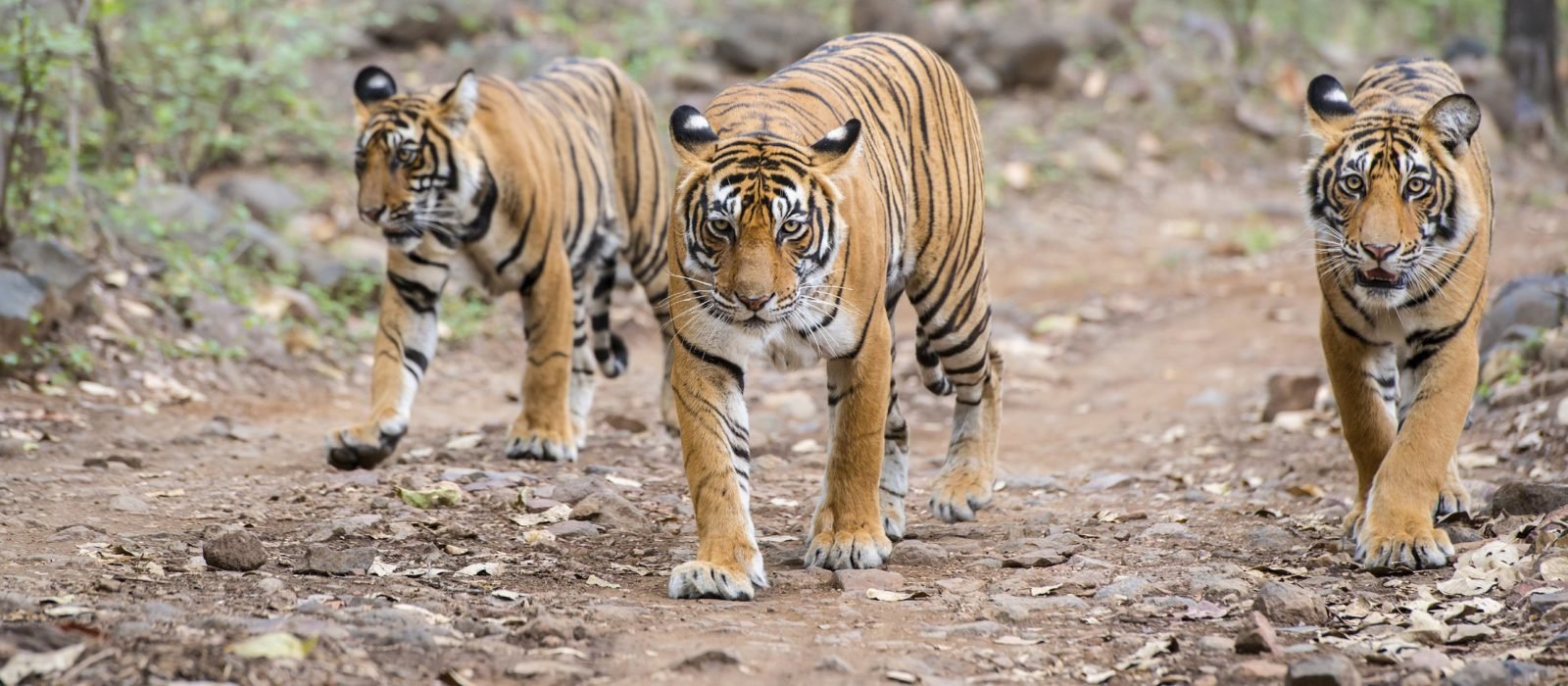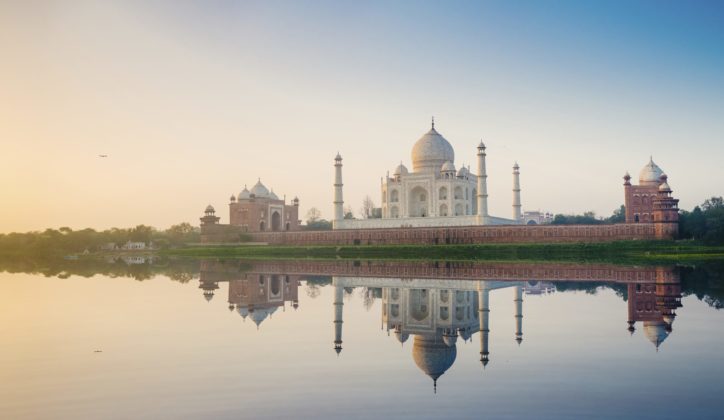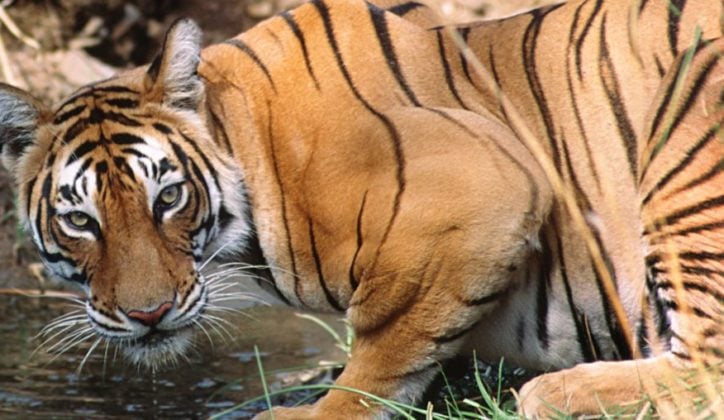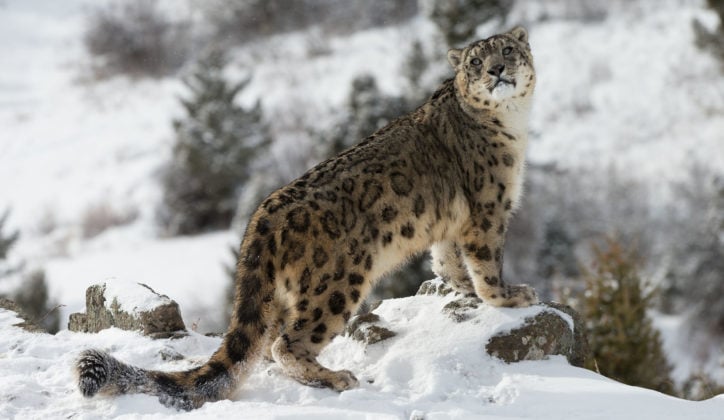Published on: February 6th, 2019
Last modified: April 19th, 2024
India is the home of big cats, and there are few experiences more magical than seeking out the majestic Bengal tigers that call this country their home.
In a land that is a real life jungle book, there are plenty of national parks in which to go tiger spotting.
From where to go to the best time to visit, this is our guide to tiger spotting in India.

Best time to go tiger spotting in India
National Parks housing tiger populations open their gates between October and June, but the best time of year to see tigers in India is from February to April. During this time of year, temperatures begin to climb so tigers start to gather at watering holes. There’s less foliage as the weather becomes drier, so it’s easier to spot these majestic creatures. As temperatures don’t become sweltering until May, it’s also a pleasant time of year to be out in the open. From mid-April through May and June, temperatures are extremely hot, so it’s best to avoid travelling during these months.
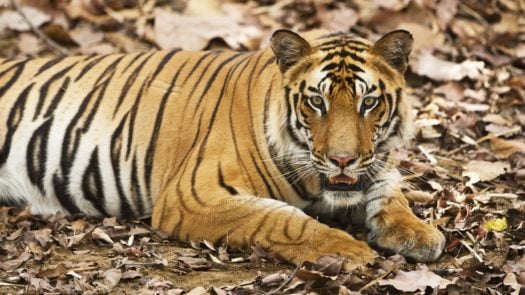

Where to go tiger spotting in India
Bandhavgarh National Park
Home to the highest density of Bengal tigers in the world, Bandhavgarh National Park – located in the east of Madhya Pradesh state – is one of India’s most popular national parks.. The forests here were long maintained as a preserve for the Maharajas and their guests, so the tiger population has had ample time to flourish. With an area of over 500 square kilometres (200 square miles), this park is filled with a wonderful variety of habitats. Rugged hills rise up from the forest floor either side of wide open valleys, and grasslands are flanked by Sal forests and bamboo thickets.
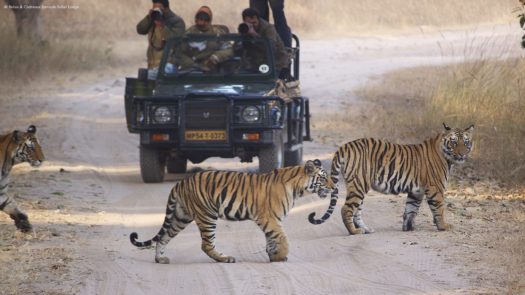
Alongside tigers, the park is also home to leopards, sloth bears, dholes (Asian wild dogs), Indian bison, spotted deer and even the Indian wolf. Birdwatching enthusiasts will feel at home here too, with Bandhavgarh housing well over 150 different bird species. The history to this reserve is fascinating; the area was declared a national park in 1968, but the human history dates back many millennia. Cave paintings and the ancient ruined fort, from which the park takes its name, are thought to be 2000 years old. With so much history to unravel, any visit to Bandhavgarh is sure to be an exciting adventure. When you’re not out on game drives, a luxury safari lodge such as Mahua Kothi or Samode is a great place to kick back and relax with a book, take a relaxing dip in a pool or indulge in a meal under the stars.

Kanha Tiger Reserve
Right in the heart of central India, Kanha Tiger Reserve is one of the most accessible wildlife reserves in India. This sprawling protected area covers an impressive 940 square kilometres (360 square miles) and is widely regarded as one of the best places in the country for tiger spotting. With its abundance of verdant forests and meadows, this deep tiger-filled jungle looks as though it has been lifted straight from the pages of The Jungle Book.
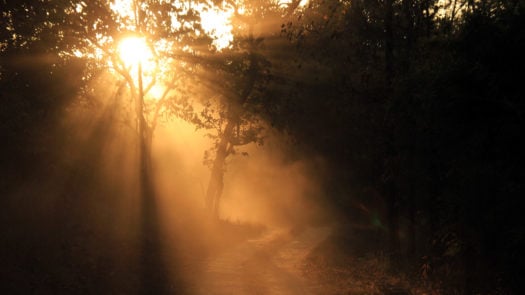
There’s a strong tiger population here, but they’re a little less easy to find than in other reserves. This means you really get to experience the forest as you roam, though, and can really take your time savouring the exploration. As a result, sightings are a more private and rewarding affair so you can leave the park with a real sense of satisfaction. Beyond tigers, there’s a variety of other enigmatic wildlife to see here. Leopards, Indian wild dogs, sloth bears and gaur bulls are just some of the mammals that have made this park their home. Watch out for the barasingha deer too, a species of swamp deer that is now only found in Kanha.
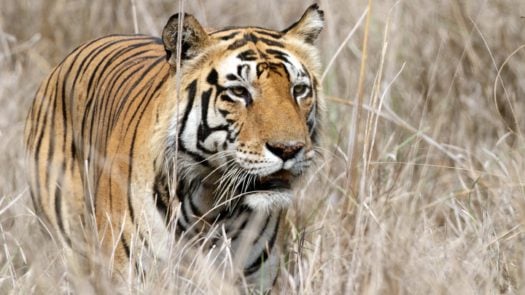
Ranthambore National Park
North India’s natural wonder, Ranthambore National Park is in the southeastern corner of Rajasthan; this national park is 392 kilometres (151 square miles) of dense jungle and ancient temple ruins. The best time to visit Ranthambore is between November and April, as the park shuts its doors in monsoon season from July to September. The population of tigers here is unrivalled, numbering at over 50 when in previous years they were dwindling. Today, Ranthambore’s tiger density is such that individuals have been relocated to add diversity to neighbouring parks. In a park that has such high numbers of tigers, you’ll never be far away from these phenomenal animals.
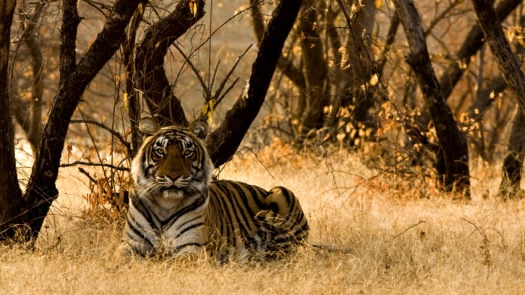
Ranthambore’s charms don’t stop at the incredible number of tigers here. The atmosphere is magical too; the ancient temple ruins are peppered with wandering predators bathed in India’s golden afternoon light. The 10th-century Ranthambore Fort sits at the heart of the park, and is now a favourite hangout spot for Hanuman langur monkeys. Wildlife is all but scarce in this natural paradise, with the alarm calls of sambar deer, striped hyenas and loping sloth bears ringing through the trees.
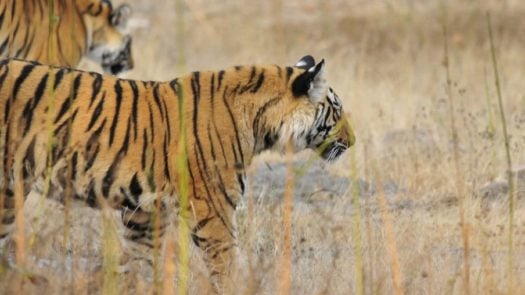
Panna National Park
Nestled in the scenic Vindhyan mountains is Panna National Park. Located in the central state of Madhya Pradesh, this national park is a vast expanse of plateaus, gorges and thick forest. The serene River Ken winds its way through Panna, giving life to a variety of animal and plant life. This park is especially beautiful to explore once the rains have fallen, as it transforms into a lush green environment interspersed with cascading waterfalls.
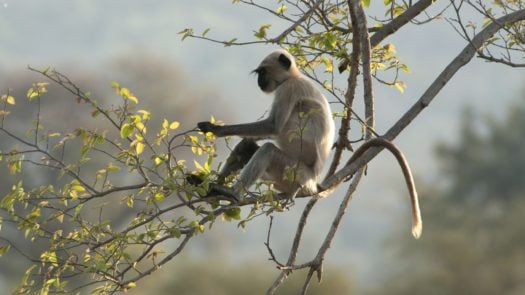
Once a royal hunting ground before becoming a national park in 1981, Panna’s tiger numbers have dwindled in the past due to poaching. The park became a protected tiger reserve in 1994, and the tiger population slowly began to increase again. Today, an ongoing translocation programme has given new hope to these animals, with tigers brought in from neighbouring parks to breed with the existing population and increase numbers. Typical of any Indian national park, this untouched area is also home to elusive leopards, wild dogs, hyenas and even crocodiles.
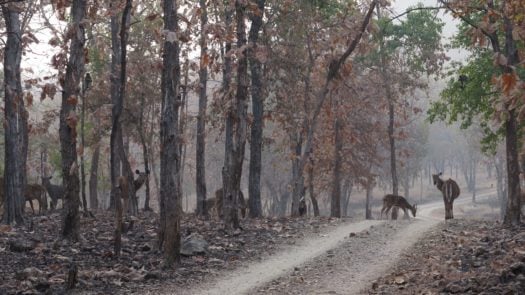
Start planning your Indian adventure
Ready to experience the thrill of tiger-spotting in the wild, amidst some of India's wildest landscapes? Our travel experts will tailor an unforgettable journey for you, ensuring every detail is perfect. From selecting the best national parks to arranging the most skilled guides, we're here to create your dream adventure.
